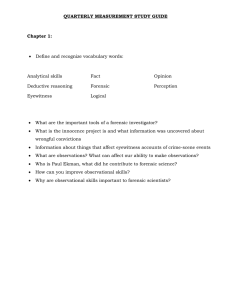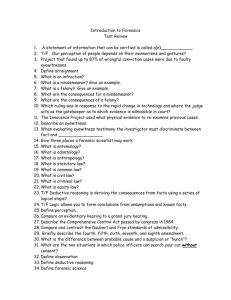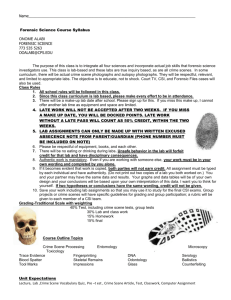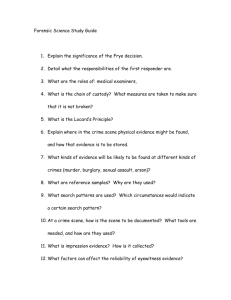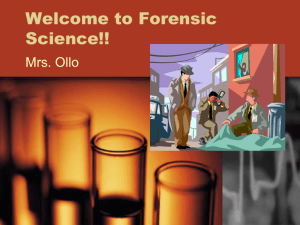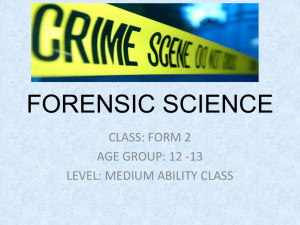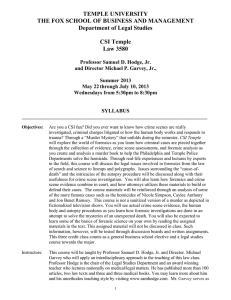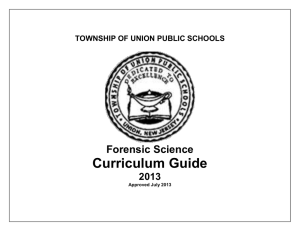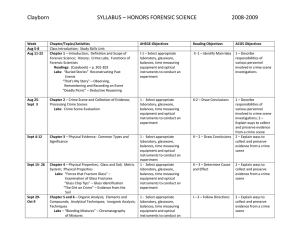File - Miss Stephanie Bagenstose
advertisement
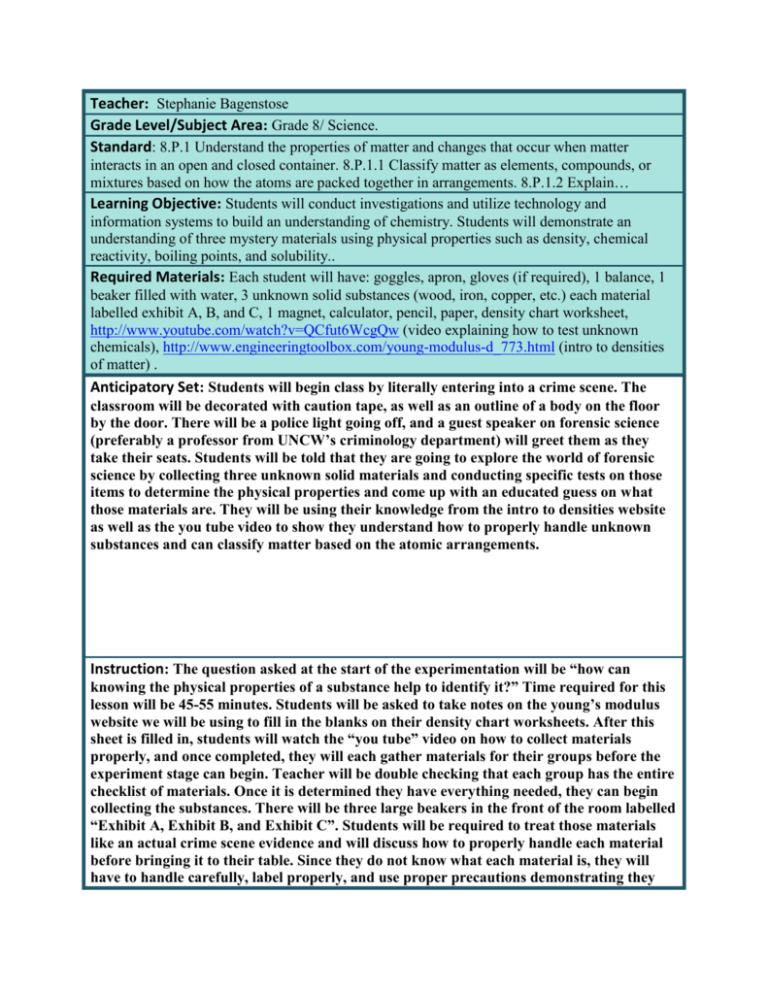
Teacher: Stephanie Bagenstose Grade Level/Subject Area: Grade 8/ Science. Standard: 8.P.1 Understand the properties of matter and changes that occur when matter interacts in an open and closed container. 8.P.1.1 Classify matter as elements, compounds, or mixtures based on how the atoms are packed together in arrangements. 8.P.1.2 Explain… Learning Objective: Students will conduct investigations and utilize technology and information systems to build an understanding of chemistry. Students will demonstrate an understanding of three mystery materials using physical properties such as density, chemical reactivity, boiling points, and solubility.. Required Materials: Each student will have: goggles, apron, gloves (if required), 1 balance, 1 beaker filled with water, 3 unknown solid substances (wood, iron, copper, etc.) each material labelled exhibit A, B, and C, 1 magnet, calculator, pencil, paper, density chart worksheet, http://www.youtube.com/watch?v=QCfut6WcgQw (video explaining how to test unknown chemicals), http://www.engineeringtoolbox.com/young-modulus-d_773.html (intro to densities of matter) . Anticipatory Set: Students will begin class by literally entering into a crime scene. The classroom will be decorated with caution tape, as well as an outline of a body on the floor by the door. There will be a police light going off, and a guest speaker on forensic science (preferably a professor from UNCW’s criminology department) will greet them as they take their seats. Students will be told that they are going to explore the world of forensic science by collecting three unknown solid materials and conducting specific tests on those items to determine the physical properties and come up with an educated guess on what those materials are. They will be using their knowledge from the intro to densities website as well as the you tube video to show they understand how to properly handle unknown substances and can classify matter based on the atomic arrangements. Instruction: The question asked at the start of the experimentation will be “how can knowing the physical properties of a substance help to identify it?” Time required for this lesson will be 45-55 minutes. Students will be asked to take notes on the young’s modulus website we will be using to fill in the blanks on their density chart worksheets. After this sheet is filled in, students will watch the “you tube” video on how to collect materials properly, and once completed, they will each gather materials for their groups before the experiment stage can begin. Teacher will be double checking that each group has the entire checklist of materials. Once it is determined they have everything needed, they can begin collecting the substances. There will be three large beakers in the front of the room labelled “Exhibit A, Exhibit B, and Exhibit C”. Students will be required to treat those materials like an actual crime scene evidence and will discuss how to properly handle each material before bringing it to their table. Since they do not know what each material is, they will have to handle carefully, label properly, and use proper precautions demonstrating they understood the video. Each group will begin by recording on a sheet of paper the visual characteristics of each substance. They will then be asked to record the physical characteristics such as magnetism and malleability. Teacher will ask questions like, “does it bend?” “Is this material magnetic?” etc. The next step will be having the students calculate density of each material using the formula they learned from the website (D= Mass/Volume). For the volume portion they will use the beaker full of water to determine water displacement. This is the final point. After this, students will be asked to make their educated guess on what each material is using the resources they were provided earlier. Teacher will then discuss how each characteristic is unique to the substances and helps determine their identity. . Independent Practice/Assessment: The students will demonstrate a full knowledge of what they have just learned by creating a “Police log book detailing all the evidence of the scene, locations of each sample found, how each sample could possibly have led to the victim’s death, etc. This will show the ability to use technology systems and resources available to develop an understanding of chemistry. Once completed, the true identity of each substance will be revealed and the group with the most correct answers will get extra credit on their tests at the end of week. Closure: The guest speaker will conduct a question and answer seminar with the students to educate them on the field of forensic science and demonstrate how it relates to matter, density, etc. Students will be asked to go home and conduct their own “crime scene investigations,” using popplet or powerpoint and bring what they have discovered to the next class for a group discussion.



